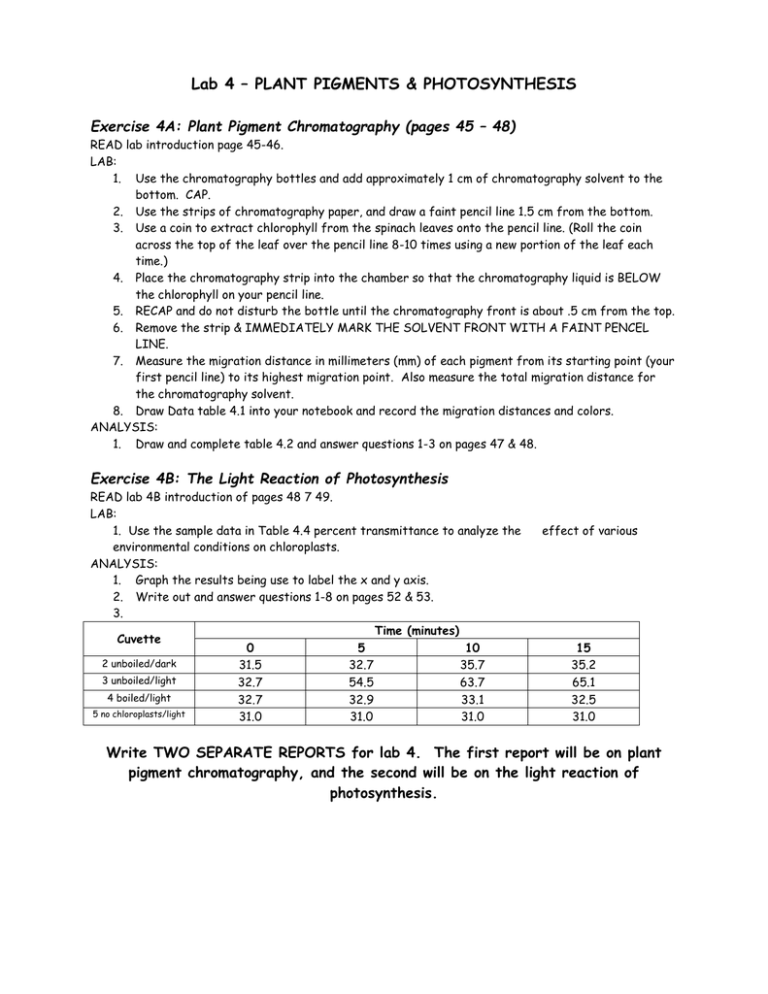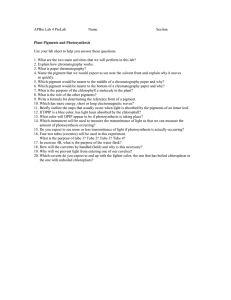Lab 4 – PLANT PIGMENTS & PHOTOSYNTHESIS
advertisement

Lab 4 – PLANT PIGMENTS & PHOTOSYNTHESIS Exercise 4A: Plant Pigment Chromatography (pages 45 – 48) READ lab introduction page 45-46. LAB: 1. Use the chromatography bottles and add approximately 1 cm of chromatography solvent to the bottom. CAP. 2. Use the strips of chromatography paper, and draw a faint pencil line 1.5 cm from the bottom. 3. Use a coin to extract chlorophyll from the spinach leaves onto the pencil line. (Roll the coin across the top of the leaf over the pencil line 8-10 times using a new portion of the leaf each time.) 4. Place the chromatography strip into the chamber so that the chromatography liquid is BELOW the chlorophyll on your pencil line. 5. RECAP and do not disturb the bottle until the chromatography front is about .5 cm from the top. 6. Remove the strip & IMMEDIATELY MARK THE SOLVENT FRONT WITH A FAINT PENCEL LINE. 7. Measure the migration distance in millimeters (mm) of each pigment from its starting point (your first pencil line) to its highest migration point. Also measure the total migration distance for the chromatography solvent. 8. Draw Data table 4.1 into your notebook and record the migration distances and colors. ANALYSIS: 1. Draw and complete table 4.2 and answer questions 1-3 on pages 47 & 48. Exercise 4B: The Light Reaction of Photosynthesis READ lab 4B introduction of pages 48 7 49. LAB: 1. Use the sample data in Table 4.4 percent transmittance to analyze the environmental conditions on chloroplasts. ANALYSIS: 1. Graph the results being use to label the x and y axis. 2. Write out and answer questions 1-8 on pages 52 & 53. 3. Time (minutes) Cuvette 0 5 10 2 unboiled/dark 31.5 32.7 35.7 3 unboiled/light 32.7 54.5 63.7 4 boiled/light 32.7 32.9 33.1 5 no chloroplasts/light 31.0 31.0 31.0 effect of various 15 35.2 65.1 32.5 31.0 Write TWO SEPARATE REPORTS for lab 4. The first report will be on plant pigment chromatography, and the second will be on the light reaction of photosynthesis.



